Multichannel & Single-channel potentiostats – what’s the difference? (Electrochemistry Basics Series)
Latest updated: June 7, 2024Introduction: Understanding single and multichannel instruments
Potentiostat / galvanostats are key measurement tools in the field of electrochemistry. They play a key role in research laboratories as well as the battery industry because they enable the measurement, control, and analysis of fundamental variables for an electrochemical system such as current and potential. These variables provide access to values of interest such as battery capacity, kinetics parameters, or electrical parameters of materials, amongst others. For more information about potentiostats (definition, background, and applications), please visit the corresponding article on the BioLogic Learning Center: “How potentiostats work and their use in Science & Industry”.
Potentiostats now offer users a wide range of electrochemical measurement opportunities, with a wide variety of instruments available to meet specific experimental needs. The correct choice between a single-channel and a multichannel potentiostat / galvanostat is critical in order to optimize experiments. Different research and testing possibilities are available for each type (single or multichannel), and they will be used in different ways.
The terms “single-channel” and “multichannel” refer to the number of measurement channels available on the potentiostat. As their names suggest, a single-channel potentiostat refers to an instrument with only one measurement channel whereas, a multichannel potentiostat indicates an instrument with more than two measurement channels. Bipotentiostats (two-channel) should be considered as a separate entity.
The aim of this article is to detail the particularities of each of these families of electrochemical instruments: single-channel potentiostat, multichannel potentiostat and bipotentiostat.
Multichannel: Modularity and Multi-tasking
BioLogic became a well-known brand thanks to the commercialization of the world’s first multichannel computer-controlled potentiostat, the MacPile. The opportunities generated by the MacPile made it a truly disruptive technology and it paved the way for the wide range of high-accuracy, high-precision modern multichannel potentiostat / galvanostats available in BioLogic’s portfolio such as the VSP, VSP-3e and VSP-300 or VMP-3e and VMP-300.
Multichannel potentiostats allow increased flexibility in the choice of instrument setup. This is because each available channel can be equipped with a measurement and control board, a booster board, or with additional options, a multichannel electrochemical instrument can be considered modular and can therefore be customized to meet the user’s specific scientific or industrial needs. Furthermore, some multichannel potentiostats (such as BioLogic instruments) are upgradable.
The user may choose to leave some channels free for future needs. Boards (modular options such as current booster boards) may be added in empty slots (the slots are the spaces left in the chassis for additional upgrades) months or years after the purchase of the instrument. This essentially means that BioLogic potentiostats become “future-proof” because they can evolve with the user’s research needs.
BioLogic potentiostats offer modular flexibility for researchers with multiple instruments. Channel boards are interchangeable within the same product range (Essential or Premium). This allows users to easily switch boards between chassis, essentially creating a modular system. This flexibility provides the ability to adapt your setup to different experimental needs.
The fact that our multichannel potentiostat can handle up to sixteen measurement boards in only one chassis results in a lower cost per channel and in a smaller laboratory footprint (compared to several single-channel potentiostats that take up more space). Additionally, integrated booster boards also reduce the footprint of the electrochemical instrument compared to external booster devices.
Another key point is that multichannel potentiostats are essential for large-scale experiments – as is often the case for energy applications – and/or long-timescale experiments such as corrosion studies for example.
In the case of a large-scale experimental plan, the experiments can be performed all at once using every available measurement channel. In the case of grouped channels, all the measurement channels are performing the same experiment with the same settings. If the channel is independent, it can perform experiments with its own settings. Performing the same protocol on several channels at the same time gives better repeatability of experiments rather than executing successive experiments.
Last, but not least, this is because conditions in the laboratory are the same for all channels. In fact, simultaneous experiments make the interpretation of results even easier thanks to display overlays and simultaneous online processing. As measurements are not performed sequentially, multichannel experiments save time as well.
CE to GND mode
N’Stat mode experiments: N’Stat mode (CE to GND) has been designed to allow the user to perform experiments requiring a multi-working electrode set-up in a single cell (see Learning Center article on CE to Ground). In this case, several channels are used for only one experiment. Each working electrode shares the same reference and the same counter electrodes, in one single electrochemical cell. This mode can be used for the study of the pitting corrosion of several samples of different materials, within one single cell, for example. Application Note #25 “Multi Pitting Corrosion” describes an experiment involving Linear Polarization (LP) and Multi-electrode Potentiodynamic Pitting (MPP). A multichannel BioLogic VMP-3 potentiostat was used for simultaneous measurements on four samples in this experiment.
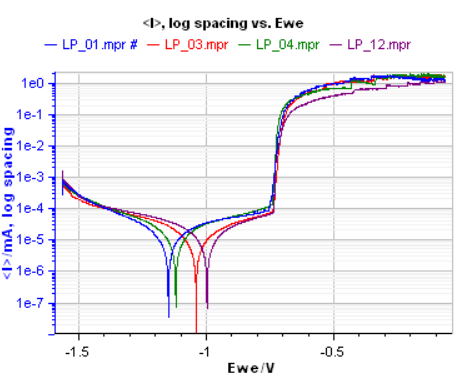
Figure 1: 4-working electrode LP curves
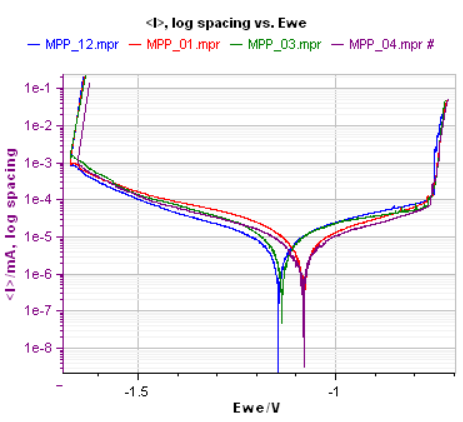
Figure 2: 4-working electrode MPP curves
Alternatively, when a long-term experiment is performed, other channels may be controlled independently from the first channel experiment in order to conduct other studies at the same time. Furthermore, the electrochemical workstation can be used by several users all at once. They can control the device from different computers and perform completely different experiments on the same potentiostat / galvanostats.
NOTE: The synchronization of channels is a feature managed by the EC-Lab® the control and analysis software of BioLogic potentiostats. It enables several cells to run in the same climatic chamber, with several temperature steps i.e. the electrochemical instrument is able to wait for all the channels to reach the same experimental sequence before moving to the next temperature step.
Finally, the experimental scope is greatly increased by multichannel potentiostats. The instruments give users increased scientific “bandwidth” which can open up experimental opportunities. Stack mode and bipot mode are available with the VMP-3 instruments family (i.e., VMP-3 and VSP) of BioLogic multichannel potentiostats.
- Stack mode experiments: A stack is made up of cells in series (batteries, fuel cells, or photovoltaic cells). Stack mode means that the desired experiment is performed on the full stack, and for each element the potential is measured, opening up access to the behavior of each element. As a stack is a series of elements the current flowing through each element is the same same as the current flowing in the full stack. See the example below of a PEIS experiment performed on a stack made up of 10 elements.
With stack mode in EC-Lab, you will generate one file for the whole experiment as opposed to one file per cell which will be more difficult to manage.
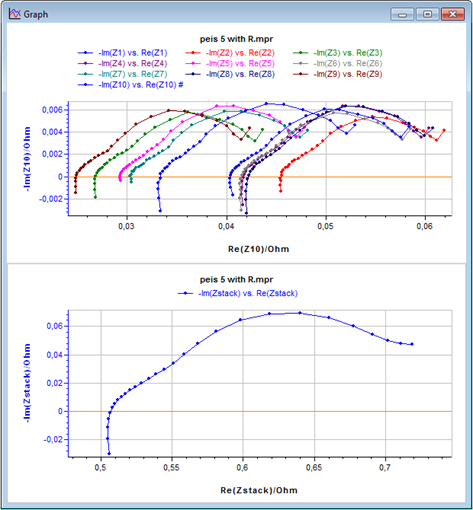
Figure 3: Stack PEIS measurement with the graph of the whole stack (bottom) and of each slave channel (top).
Single-channel: Dedicated, highly portable instruments
For electrochemists who need only one measurement channel in their laboratory, single-channel potentiostats offer lower overall acquisition costs when compared to multichannel potentiostats. The main advantages of electrochemical workstations such as the BioLogic SP-50e, SP-150e or SP-200, SP-300 potentiostats / galvanostats, are their compact nature and their portability. They are up to five times lighter than multichannel potentiostats.
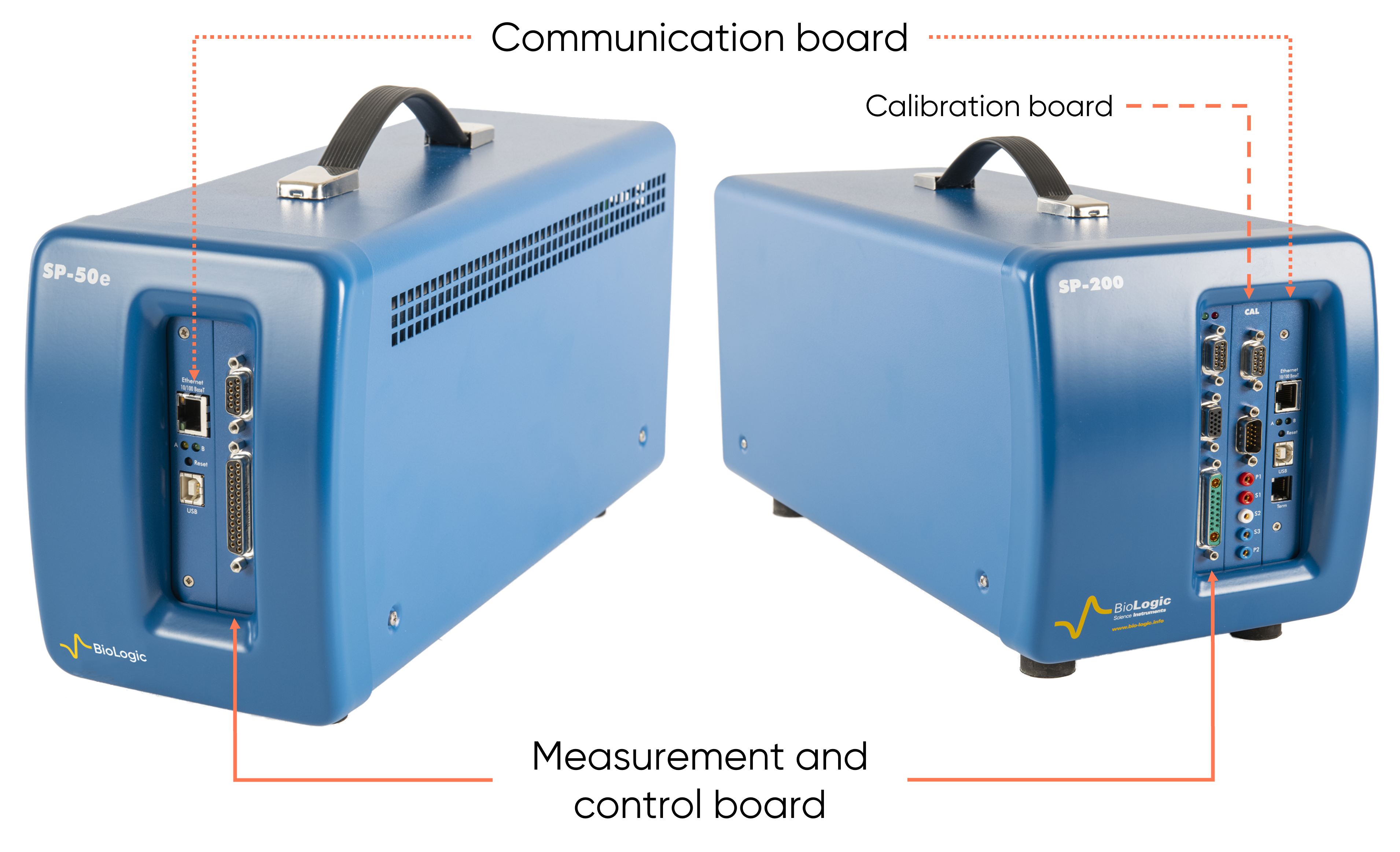
Figure 4: Configuration of SP-50e and the SP-200 potentiostats
The advantage of this type of potentiostat is that the user can dedicate his/her instrument and experimental set-up to one experiment, facilitating daily life in the laboratory.
Dedicating the buffer of the communication board to only one measurement channel makes communication between the instrument and the computer smoother.
Finally, single-channel potentiostats are often chosen for educational or training purposes in general fields of electrochemistry.
Bipotentiostat: A specific tool for specific applications
Some electrochemical instruments, such as the BP-300 bipotentiostat / bigalvanostat, are mainly dedicated to bipot measurements (2-working electrode measurements). They are made up of two measurement and control boards, each associated with its own booster board. These two channels can also perform experiments independently. In such cases, the NStat mode (CE to GND) mode is required (see above and also Learning Centre article Connection to the cell).
- Bipot mode experiments: Bipot mode is the N’Stat mode for two working electrodes, in one single cell, sharing the same reference and counter electrodes. This will be described further in the specific paragraph below.
In some cases, potentiostats from the single-channel family have two available slots in their chassis. BioLogic single-channel potentiostat SP-240 has an integrated booster in its second slot that enables users to increase the current and voltage capabilities of the instrument. SP-150e and SP-300 potentiostats also have 2 available slots. Thus, they may contain one measurement board plus one booster board, or two measurement and control boards. In this last configuration, similarly to the BP-300, the instrument is able to perform independent or coupled measurements.
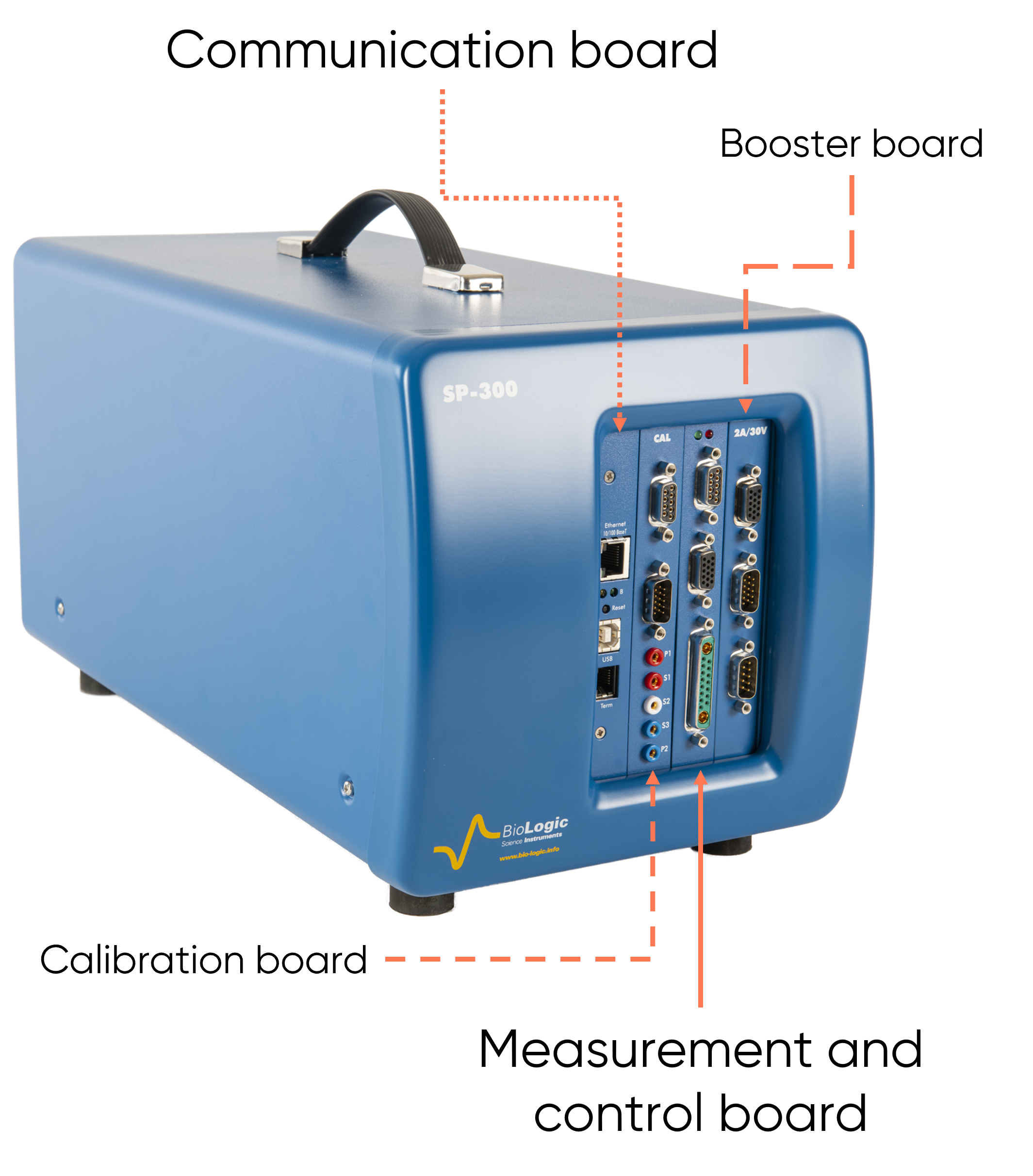
Figure 5: Example of configuration of the SP-300 potentiostat
Bipot measurement mode means that the experiment is performed using two working electrodes. It is particularly interesting for Rotating Ring Disk Electrode (RRDE) measurements for example. It enables work in a well-defined hydrodynamic regime. One channel is dedicated to the working “Ring” electrode while the other is associated with the “Disk” working electrode. The principle of RRDE is described in the BioLogic Learning Center article “Rotating Ring Disk Electrode: An Introduction”.
Bipot measurements can also be performed with multichannel potentiostats.
With EC-Lab Bipot techniques, a clear advantage is that you will generate one file for the whole experiment.
We hope that this article has helped you better understand the differences between single-channel and multichannel potentiostats and that this will help you choose the potentiostat that best suits your electrochemical or battery testing needs. Don’t forget, you can contact BioLogic if you need to discuss your needs with a BioLogic Sales Engineer.
For more information about BioLogic potentiostats, don’t hesitate to view our overview page.
| Term | Definition |
| Slots | Free space on the potentiostat chassis where a board (generally speaking a channel) can be inserted. |
| Single-channel potentiostat | Potentiostat with only one measurement channel |
| Bipotentiostat | Potentiostat with at least two available slots and made up of one or two measurement channels |
| BioLogic Modularity | Characteristic of BioLogic potentiostats that allows the user to choose specific potentiostat modules to create a fully customized electrochemical instrument |
| Synchronisation | BioLogic potentiostat feature that enables the synchronization of two or more channels in order for the channel to proceeed to the next step of the technique at the same time |
| Stack | Several cells put in series |
| Buffer | Potentiostat hardware storage that collects data points before sending them to the computer |
| Chassis | The BioLogic chassis that contains the potentiostat and associated electronical devices |
| RRDE | Rotating Ring Disk Electrode: 2-working electrode device used to study mass transport phenomena |
| Channel | Measurement board extended by cell cables inserted into a potentiostat slot enabling control and measurement during experiments. |
| Measurement and control board | Electronic card allowing the application of a potential and measurement of a current or both |
| Climatic chamber | Enclosure that enables the control the temperature of the experimental environment |
More information on this subject...
Related products